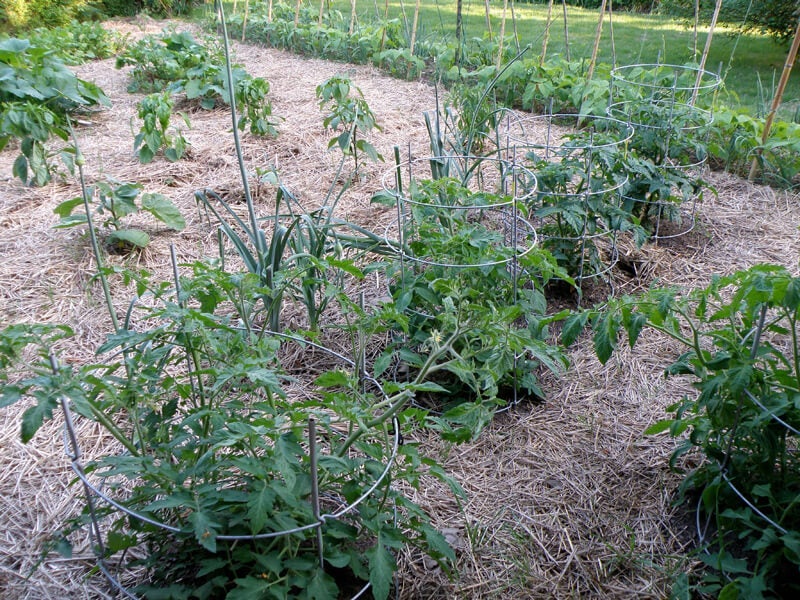To keep the vegetable garden healthy, avoid repeating the same planting plan in the same spot. This practice, called crop rotation, can feel a bit like juggling, but it's important to prevent crop-specific pests and diseases from building up and carrying over from one season to the next in the soil. If you move the crop, the problem has no host on which to live. Ideally, rotate a vegetable (or vegetable family) so it grows in a particular spot only one year out of three.
Crop Rotation
Rotating vegetable crops is an easy juggle in large vegetable gardens. Rearranging small gardens can be more challenging, but even minimal rotation will make a big difference. In a raised bed, if you use a planting mix that is changed out every two or three years, crop rotation is less important. (If you grow plants in containers, simply change out the potting mix every year and you won't have to worry about crop rotation at all. For best results, choose a premium potting mix such as Miracle-Gro® Potting Mix.)
Start by making a rough sketch of the garden as you plant and date the sketch in your garden journal. Nothing fancy, "X marks the spot" will do. Note each planting of the year if you make successive plantings in spring, summer, and fall. Sketches in your garden journal remind you how you planted the garden last year so you won't follow the exact same plan this year.
Putting your garden rotation on paper also lets you plan ahead to know how many plants of each type you need. If you note the variety name, such as "Bonnie Original Tomato," instead of just "Tomato," you'll have a record in case you can't remember the name of your favorite tomato.
If you're not sure whether a spot gets enough light, try this test. On a sunny to partly sunny day, turn off all lights and periodically check on the natural sunlight. How much sun does the spot get throughout the day?
Rotate by Vegetable Plant Families
Vegetables that are members of the same botanical family are susceptible to the same problems, so try to follow members of one family with members of a different family. For example, plant tomatoes in the spot where the beans grew last year, the squash in the spot where peas grew, etc.
The Tomato Family
The tomato family includes tomatoes, eggplant, peppers, and potatoes. These are heavy feeders and are best planted in enriched soil. Tomato Family members also are often affected by the same diseases. Never follow tomatoes after potatoes because deadly late blight can overwinter in potatoes that might have been missed and remain in the soil.
The Bean Family
These crops enrich the soil by adding a little nitrogen. This group includes green beans, green peas, southern peas, jicama, and peanuts, as well as clover and vetch used as cover crops in the cool season.
The Squash Family
Squash family members are heavy feeders that grow best in rich soil. They include summer and winter squash, pumpkins, gourds, cucumbers, and melons (including cantaloupe and watermelon).
The Cabbage Family
These leafy greens thrive on nitrogen-rich soil. Plant them where a member of the bean family has grown before. Members include cabbage, broccoli, cauliflower, kale, collards, and turnip greens.
Crop rotation is not as complicated as it sounds, especially if you take the time to sketch a garden plan and refer to the list of families. The benefits are definitely worth the effort!





 Herbs
Herbs
 Vegetables
Vegetables
 Fruit
Fruit
 Flowers
Flowers
 Succulents
Succulents


